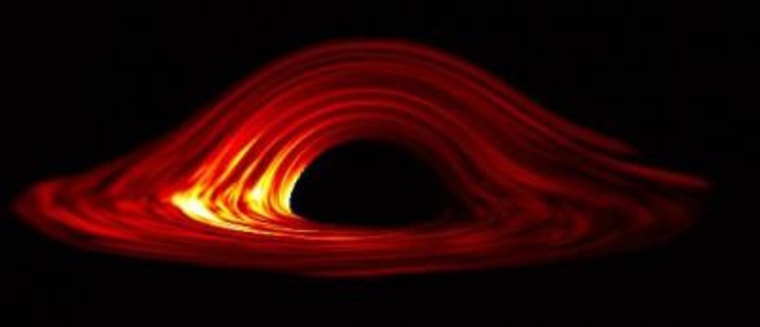You wouldn't want to eat one, but you might take comfort in the new knowledge that a black hole and its surrounding material take the shape of a doughnut regardless of the mass of the black hole itself.
Black holes can't be seen, but astronomers detect them by noting how other objects are affected by the tremendous gravity created in these small spheres of space.
Intense radiation can be emitted from the area immediately surrounding a black hole as incoming material is accelerated to a significant fraction of light-speed and gets superheated.
"This should be a very messy and complicated environment, but the stuff flowing onto different black holes looks the same, no matter how massive the black hole is," said Barry McKernan, an astrophysicist at the American Museum of Natural History in New York and a professor at the Borough of Manhattan Community College, City University of New York.
McKernan and colleagues analyzed data collected for 245 active galactic nuclei, which contain supermassive black holes at their cores. These black holes feed on infalling gas and can emit powerful radiation beams that shine with the energy of billions of stars. The black holes studied weighed between 1 million and 100 million times the mass of the sun.
The researchers specifically measured the X-rays and infrared light around these black holes, testing a hypothesis about the relationship between these two types of extreme radiation.
They knew that X-rays should come from hot material close to the black hole, while infrared light should come from warm material more distant from the black hole.
This pattern allowed the researchers to tell if matter around the black hole was being observed face-on (looking directly down onto the black hole ringed by X-rays and infrared light) or edge-on (seeing only the side of the doughnut of material). Some of the infrared light should also come from part of the doughnut that has been fried by X-ray bombardment.
By comparing the proportion of X-rays to infrared light coming from around a black hole, McKernan and his colleagues indirectly figured out how material may be distributed around the black hole. After partitioning the data into those observed edge-on and those observed face-on, the team found that 90 percent of the active galactic nuclei observable face-on had basically the same proportion of X-rays to infrared light.
The conclusion: No matter the heft of the black hole, its surrounding material took the shape of a doughnut with a black hole at its center.
"Now we know they all look like doughnuts, and the same kind of doughnut too," McKernan said. "The lack of variety would disappoint Homer Simpson."
